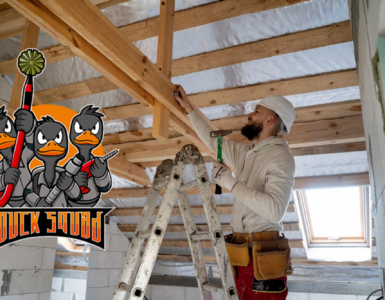Septic tanks aren’t exactly top-of-mind for most homeowners—until something goes wrong. But for the nearly one in five American households that rely on septic systems, routine maintenance is not just important; it’s essential. One of the most critical tasks in keeping a septic system functioning properly is knowing how often to pump it.
So how do you determine the right pumping schedule? Is it every few years, once a decade, or only when there’s a problem?
The answer depends on several factors—including household size, tank size, usage habits, and soil conditions. In this comprehensive guide, septic experts, environmental health authorities, and seasoned technicians from trusted providers like Jones Septic Service in Dutchess County weigh in on the real timeline behind this essential maintenance task.
What Happens Inside a Septic Tank?
A septic system is designed to collect and treat wastewater from your home, separating solids from liquids and allowing treated water to safely disperse into the soil via a drain field.
Here’s a quick breakdown of the process:
- Wastewater flows into the tank from toilets, sinks, showers, and appliances.
- Solids settle to the bottom of the tank, forming sludge.
- Oils and grease rise to the top, creating a scum layer.
- Liquid effluent flows out into the drain field for final filtration.
Over time, the solid sludge builds up and reduces the tank’s holding capacity. If not removed, it can lead to clogs, backups, and even drain field failure.

Why Regular Pumping Matters
Skipping septic pumping isn’t just risky—it can be costly. According to the U.S. Environmental Protection Agency (EPA), regular septic system maintenance, including pumping, can save homeowners thousands of dollars in repair costs and prevent groundwater contamination.
Benefits of regular pumping include:
- Avoiding sewage backups into the home
- Preventing drain field overload and failure
- Prolonging the life of the septic system
- Maintaining water quality and sanitation
- Meeting health department codes and resale requirements
General Guidelines: When Should a Septic Tank Be Pumped?
Most professionals agree that septic tanks should be pumped every 3 to 5 years. However, that’s just a guideline—not a hard rule. Depending on usage and tank size, some systems may require annual service, while others may go longer between pumps.
Factors influencing frequency include:
- Number of people in the home
- Size of the septic tank
- Water usage habits
- Use of garbage disposals or high-volume appliances
- Age and condition of the system
To get a more accurate assessment, homeowners are encouraged to schedule a Dutchess County NY Septic Tank Inspection. Professional inspections can evaluate sludge levels and recommend an appropriate schedule tailored to the property.
How to Calculate Your Pumping Schedule
The New York State Department of Health offers helpful charts and calculators that provide recommended pumping intervals based on tank size and occupancy (source).
Here’s a simplified reference table:
| Household Size | 1,000-Gallon Tank | 1,500-Gallon Tank |
| 2 People | Every 5–6 Years | Every 7–8 Years |
| 4 People | Every 3–4 Years | Every 5–6 Years |
| 6+ People | Every 1–2 Years | Every 3–4 Years |
If your household uses a garbage disposal, high-capacity laundry, or multiple bathrooms, expect to schedule pumping more frequently. Even water-efficient homes benefit from regular checks, especially if the system is older or the drain field is located in challenging soil.
Warning Signs You’ve Waited Too Long
Sometimes the system itself will let you know it’s time to pump. Ignoring the following signs could lead to costly consequences:
- Slow draining sinks or toilets
- Gurgling sounds in the plumbing
- Foul odors inside or outside the home
- Standing water or soggy soil near the drain field
- Sewage backing up into tubs or drains
If you experience any of these, it’s time to call for immediate Dutchess County NY Septic Tank Pumping. The faster you act, the more damage you’ll prevent.
The Importance of Professional Cleaning
While pumping removes most of the sludge and liquids, a deeper clean may be needed to eliminate stubborn residue that clings to the tank’s walls and floor.
Homeowners who notice repeated problems, foul odors even after pumping, or inconsistent performance may benefit from Dutchess County NY Septic Tank Cleaning. Cleaning goes a step beyond pumping to restore the tank’s full capacity and ensure long-term performance.
The Role of Routine Inspections
Inspections are a critical part of proactive septic maintenance. During a typical inspection, technicians:
- Measure sludge and scum layers
- Check inlet and outlet baffles
- Inspect for cracks, leaks, or structural damage
- Examine drain field conditions
- Recommend pumping or repairs as needed
Even if the tank isn’t due for pumping, inspections can uncover small issues before they turn into big repairs. Many Dutchess County residents schedule inspections alongside seasonal maintenance or home sales.
Repairs vs. Replacement: When a Pump Isn’t Enough
There are times when a simple pump-out won’t fix the problem. Tanks that are cracked, leaking, or severely deteriorated may need repair or replacement.
Common reasons for septic repair include:
- Root intrusion from nearby trees
- Cracks in the tank or inlet/outlet pipes
- Damaged baffles or filters
- Improper installation or sizing
If a system is beyond repair, homeowners can consult with local experts for a new Dutchess County NY Septic Tank Installation that meets today’s safety and efficiency standards.
What to Expect During a Pumping Appointment
For those new to septic maintenance, the process is usually faster and cleaner than expected. A reputable company like Jones Septic Service will:
- Locate the tank (if necessary)
- Uncover the access lids
- Use specialized vacuum equipment to remove all waste
- Perform a quick inspection
- Seal the tank and leave the yard clean
Appointments typically take 30–60 minutes, depending on tank size and accessibility.
Septic Care Tips Between Pumpings
To keep your system running smoothly between professional visits:
- Only flush toilet paper and waste—never wipes, hygiene products, or paper towels.
- Don’t pour grease or chemicals down drains.
- Fix leaky faucets and running toilets promptly.
- Avoid parking or building over the drain field.
- Limit water-intensive tasks in a single day.
Educating household members about septic-safe habits can dramatically reduce the strain on the system.
How Seasonal Changes Affect Septic Systems
In Dutchess County, seasonal weather can have a significant impact on septic performance. In the spring and fall, saturated soil can reduce drain field absorption. In the winter, frozen ground can make access more difficult.
Scheduling pumping and inspections in late summer or early fall can help prepare the system for seasonal changes, minimizing risks during the colder months.
Portable Toilets: A Practical Solution During Septic Work
If your septic system is undergoing major repairs or installation, or you’re hosting a large event at home, consider renting portable toilets to reduce strain. Temporary solutions from Jones Septic provide hygiene, convenience, and peace of mind during high-use periods or when your system is offline.
The Value of Working with a Local Septic Provider
In a place like Dutchess County, where no two properties are exactly alike, septic systems demand more than just standard service—they require local experience. From the rural stretches of Red Hook and Pine Plains to the historic homes in Poughkeepsie and Beacon, every septic setup has its own story. Soil types vary dramatically across the region, water tables fluctuate, and many properties were built long before modern code requirements. That’s why working with a local septic provider isn’t just a preference—it’s a necessity.
One name consistently stands out in the region: Jones Septic Service.
With decades of hands-on experience, Jones Septic has built a reputation rooted in dependability, transparency, and neighborly care. They understand the terrain, the regulations, and the real-life needs of Dutchess County residents and business owners. Here’s what truly sets them apart:
Fast Response Times
Septic problems rarely occur at convenient times. Whether it’s a slow-draining sink or a full system backup, Jones Septic understands that time is of the essence. As a locally based company, they’re able to respond quickly—often the same day—minimizing damage, stress, and potential health hazards.
Transparent Pricing
No one likes surprise fees, especially when dealing with something as essential as a septic system. Jones Septic believes in clear, upfront pricing. Before starting a job, they walk clients through the process, explain the costs involved, and offer honest recommendations. No vague quotes. No hidden charges.
Full Range of Services
Whether a homeowner needs a routine Dutchess County NY Septic Tank Inspection or a full-scale Dutchess County Septic Tank Repair, Jones Septic provides comprehensive, start-to-finish solutions. Their service list includes:
- Septic tank locating & pumping
- Drain field repairs & installations
- Pipe snaking & cleaning
- Sewer and water line repairs
- Septic system inspections
- Septic tank cleaning and installations
- Portable toilet rentals for events or construction
This full-service approach means clients don’t have to juggle multiple contractors—they can rely on one trusted partner for all their septic needs.
Honest Assessments Without Upselling
Unlike some companies that might push unnecessary services, Jones Septic operates with a straightforward, no-pressure philosophy. Their technicians are trained to educate—not to upsell. If a system is in good shape, they’ll tell the homeowner exactly that. If repairs are needed, they explain why and offer realistic solutions tailored to the property and budget.
A Strong Reputation Built on Community Trust
Jones Septic isn’t just another service provider—they’re part of the Dutchess County community. Their reputation has been built one job at a time through word of mouth, referrals, and consistent quality. They take pride in supporting local homeowners and businesses and in treating every customer like a neighbor.

Trusted Resources for Septic System Information
For additional insights and homeowner resources, these government and educational sites provide valuable information:
- EPA: Septic Systems Overview
- CDC: Septic Tank Safety and Wastewater Guidance
- New York State Department of Health – Septic Systems
Bookmark these sites for future reference on best practices and compliance updates.
Frequently Asked Questions About Septic Tank Pumping
- How do I know my tank is full if there are no symptoms?
Even without obvious signs, septic tanks accumulate sludge and scum over time. By the time symptoms like slow drains or foul odors appear, your system may already be under stress. That’s why routine pumping based on time—usually every 3 to 5 years—is so important. A Dutchess County NY Septic Tank Inspection can determine your current levels and help you avoid surprises down the road.
- Is it cheaper to pump than to repair?
Absolutely. Routine septic tank pumping typically costs a few hundred dollars, while repairs or full system replacements can run into the thousands. Catching problems early with regular Dutchess County NY Septic Tank Pumping is a small investment that can save homeowners major expenses and a lot of stress.
- Can I pump the tank myself?
Pumping a septic tank is not a DIY task. It requires professional-grade vacuum equipment, proper training, and waste disposal certification. Attempting to do it yourself can be dangerous, illegal, and ineffective. It’s always best to leave it to licensed professionals like Jones Septic, who ensure the job is done safely, thoroughly, and in compliance with environmental regulations.
- Will additives reduce how often I need to pump?
No. While some septic additives claim to enhance bacteria or “digest” waste, they can’t remove the physical buildup of solids at the bottom of your tank. Only pumping can do that. Additives are not harmful in most cases, but they shouldn’t be relied on as a substitute for professional service.
- Do I need to uncover the tank before service?
If you know where the tank is and it’s easily accessible, uncovering it ahead of time can save time and cost. However, if you’re not sure, Jones Septic offers reliable septic tank locating services to pinpoint the exact location without unnecessary digging or property damage.
- How long does septic tank pumping take?
Most jobs take about 30 to 60 minutes, depending on the tank size, access, and how full it is. If the technician performs an inspection at the same time or needs to locate the tank, it may take a little longer—but the process is quick, efficient, and designed to cause minimal disruption to your day.
- Is there a best time of year to pump my septic tank?
Many homeowners choose to schedule pumping in the late summer or early fall, especially in colder climates like Dutchess County. It’s best to service your system before the ground freezes, as frozen soil can make access more difficult in the winter months.
- What if my tank hasn’t been pumped in over 5 years?
If it’s been that long, it’s time to act—especially if you notice slow drains or odors. The good news? Even if it’s overdue, most systems can be brought back to good health with professional Dutchess County NY Septic Tank Cleaning and inspection. The sooner you schedule, the better the outcome.
- Can I pump during the winter?
Yes, but it may be more challenging. Snow, ice, and frozen ground can complicate access to the tank. If your system is showing signs of stress, don’t wait for spring. Local professionals are equipped to handle winter conditions, though early fall is often the ideal time for routine pumping.
- What’s the difference between pumping and cleaning?
Pumping removes the bulk of the liquid and solid waste. Cleaning is more thorough—it removes hardened sludge and scum stuck to the tank walls and bottom. If your system hasn’t been maintained regularly or is experiencing issues, a full cleaning may be recommended to restore capacity and performance.





